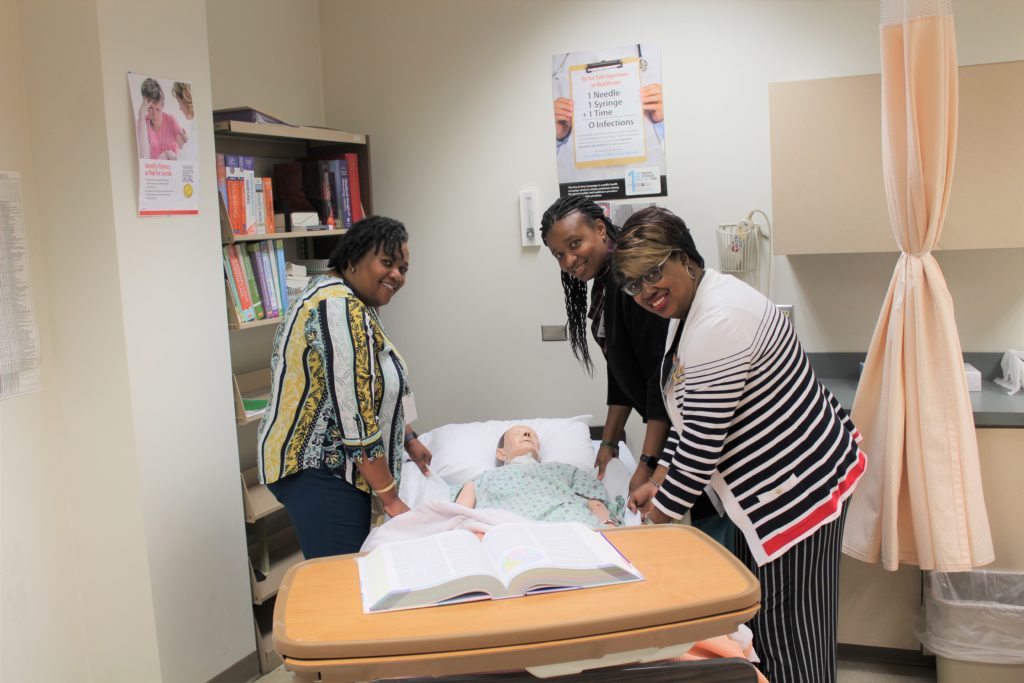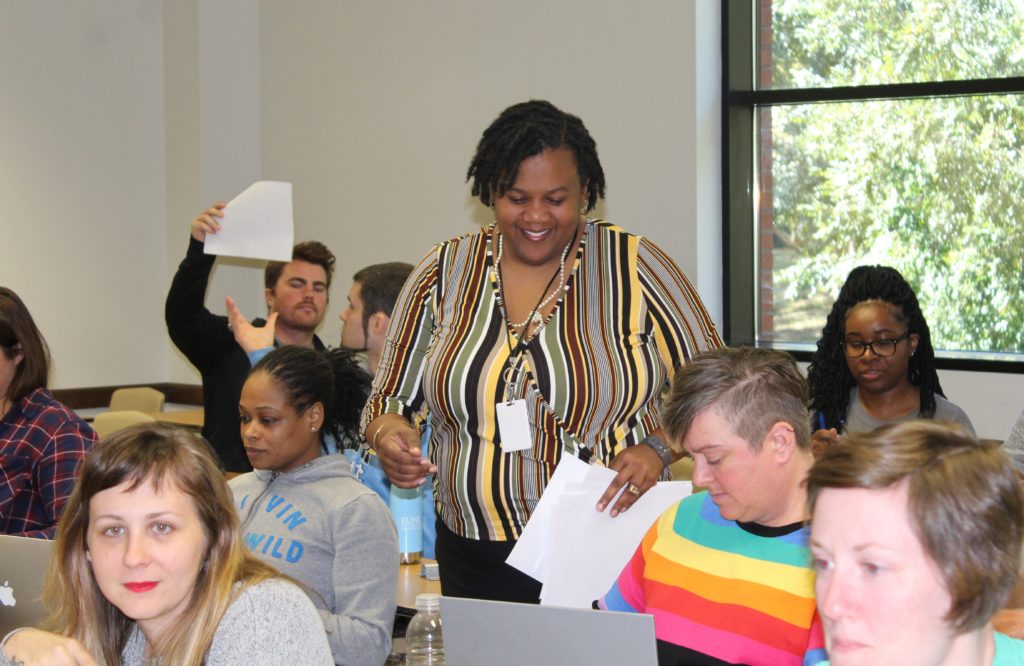The Centers for Disease Control and Prevention (CDC) continues to issue the rise in the number of youths who have been diagnosed with measles. This national outbreak of the highly contagious measles virus has been recorded as 1,282 individual cases in 31 states as of December 2019 and growing. This is the greatest number of cases reported in the U.S. since 1992. More than 73% of the cases this year are linked to outbreaks in New York. Now the necessity of the school nurse has come into focus.
According to the National Association of School Nurses (NASN), about 40% of our nation’s schools only have
a part-time nurse, and 25% don’t have a nurse at all. Not surprisingly, the school systems that are largely affected or at greater risk are rural and urban schools. But with the potential of measles affecting a large number of children and adolescents, school nurse practitioners in several states hurried to refresh themselves on the measles symptoms and to reach the parents of students at risk of infection while working to keep all students safe. They have become the first line of defense in protecting school communities.The origin of the school nurse has been traced to a Canadian trained woman named Lina Rogers Struthers who is credited as the first one in America. She was assigned to work in four different lower Manhattan schools just as a month-long experiment in October 1902. Officials wanted to see whether having a nurse would improve students’ health and attendance. Despite the fact that there were 10,000 students, her presence made a huge impact on improving the health of students. In fact, in just one month the absentee rate of students in all four schools dropped dramatically. And after the six-month mark, absenteeism fell by 90%. The surprise at the numbers spoke for themselves. The officials next secured funding to employ another 27 school nurses. By the end of 1914, there were as many as 400 in New York City alone. Noticing what the impact nurses were having, other cities quickly followed suit. Los Angeles was one of the first cities to jump on the bandwagon; it hired its first school nurse in 1904.
 Today, everything that has to do with school nurses and vaccines—from unequivocal conversations with parents about the science of immunization to the firsthand monitoring of student populations for diseases, have been made difficult by the underfunding of nursing services. In school systems without full-time nurses, it is not unusual for nurses to travel between three or four schools a day or week. Burdened with caseloads of up to 1,500, they try to distribute medications and treatments on time, attempting to triage the most critical cases, while also keeping on top of a mountain of paperwork, according to the National Education Association, which shares with the NASN concern for the need to ramp up the number of full-time nurses.
Today, everything that has to do with school nurses and vaccines—from unequivocal conversations with parents about the science of immunization to the firsthand monitoring of student populations for diseases, have been made difficult by the underfunding of nursing services. In school systems without full-time nurses, it is not unusual for nurses to travel between three or four schools a day or week. Burdened with caseloads of up to 1,500, they try to distribute medications and treatments on time, attempting to triage the most critical cases, while also keeping on top of a mountain of paperwork, according to the National Education Association, which shares with the NASN concern for the need to ramp up the number of full-time nurses.
At a time when the nation’s health care debate is receiving fixed attention, it is indisputable that the delivery of effective and responsive health care is dependent on adequate staffing resources and much success is dependent on adequate nurse staffing levels. But there is a current and forecasted national shortage of nurses because of talent pipeline conditions. While 25% of the country’s public schools do not employ a nurse, and in many school systems there are only part-time nurses, the issue is not merely the unavailability of talent. The overarching issue here is funding.
There are no federal laws regulating school nurses. Today, there are no federal laws regarding staffing, hours of work, compensation, or caseload. But the American Academy of Pediatrics (AAP) recommends at least one full-time registered nurse in every school—a standard many districts have failed to meet or are unable to meet.
The NASN defines school nursing as a specialized practice of professional nursing that advances the well-being, academic success, and lifelong achievement of students. To that end, nurses facilitate positive student responses to normal development; promote health and safety; intervene with actual and potential health problems; provide case management services; and actively collaborate with others to build student and family capacity for adaptation, self-management, self-advocacy, and learning.
A recently published research article in the NASN School Nurse journal focused on one of the most difficult problems for school nurses and families: the issue of suicide. The article concluded that a knowledge gap exists in school communities regarding suicide prevention education. It highlights two interrelated topics: nurse engagement in dialogue with students’ families, and the implementation of a community-based suicide prevention educational program at a suburban public school district. Diane Cody Roberts, MPH, BSN, RN, and her coauthors provide an overview of the public health problem of suicide for students, current student challenges, the role of the school nurse in suicide prevention, and a key gap in current school nursing practice. The two overarching goals for this community-based project were to have nurses engage in productive conversations with students’ parents and families about suicidality concerns and to increase the school community’s knowledge about suicide prevention.
But as Laurie Combe, MN, RN, NCSN, president of NASN pointed out recently, when the nurse is not in the school—because they are covering multiple schools—then the nurse misses lots of opportunities to build trust with parents and with families. If they don’t see the nurse and if the nurse is simply the person telling them to comply with immunization directives, then there is the likelihood of resistance.
In May 2017, the Joint Legislative Program Evaluation Oversight Committee of the North Carolina General Assembly directed the Program Evaluation Division (PED) to analyze the need for school nurses and determine how these nurses are funded. Need is growing due to increased attendance by exceptional children and students with chronic conditions as well as laws and policies expanding the health care responsibilities of schools. The PED found that only 46 of 115 Local Education Agencies (LEAs) currently meet the school nurse-to-student ratio of 1:750 recommended by the State Board of Education in 2004. Achieving either the 1:750 ratio or providing one nurse in every school (the current recommended standard of the NASN) would cost between $45 million and $79 million annually.
The report continued that approximately 60% of all medical procedures conducted in schools are performed by school employees who are not nurses. As a result, students are vulnerable to errors and gaps in emergency medical care, and funding intended for education is being used to subsidize health care. Furthermore, unlike other school-based services such as speech therapy, few LEAs file for Medicaid reimbursement for nursing services because, under the current Medicaid State Plan, a Registered Nurse must provide the care as ordered by a physician as part of an Individual Education Plan for the student.
 Lee Antoinette Moore, MSN, on the faculty of the Durham, North Carolina Technical Community College School of Nursing, is a former school nurse with experience in New York City from 2004-2006, in North Carolina 2008-2010, and in Hawaii 2012 as a cover nurse who is called when there is an unplanned nurse’s absence. Her prior experience includes that of a military nurse in Germany. Both North Carolina and New York are comparable in many ways. As a whole, with the exception of a few districts, the nursing staff are each assigned to cover more than one school. All of North Carolina’s metropolitan areas have nurses covering more than one school. At the start of the school year, nurses are assigned to engage the schools’ support staff—the administrative support on such things as insulin injection, distribution of medication, some symptom identification, temperature taking and reading, as well as when to invite emergency assistance.
Lee Antoinette Moore, MSN, on the faculty of the Durham, North Carolina Technical Community College School of Nursing, is a former school nurse with experience in New York City from 2004-2006, in North Carolina 2008-2010, and in Hawaii 2012 as a cover nurse who is called when there is an unplanned nurse’s absence. Her prior experience includes that of a military nurse in Germany. Both North Carolina and New York are comparable in many ways. As a whole, with the exception of a few districts, the nursing staff are each assigned to cover more than one school. All of North Carolina’s metropolitan areas have nurses covering more than one school. At the start of the school year, nurses are assigned to engage the schools’ support staff—the administrative support on such things as insulin injection, distribution of medication, some symptom identification, temperature taking and reading, as well as when to invite emergency assistance.
In 2016, the AAP issued a policy statement recognizing the important role nurses play in promoting the health and well-being of children in the school setting. By understanding the benefits and responsibilities of school nurses working in collaboration with the school physician, pediatricians can support and promote school nurses in their own communities, thus improving the health, wellness, and safety of children and adolescents.
Because the nurse plays such an integral role in the school, they must be able to work with a variety of people. School nursing training focuses on improving communication skills, developing organizational skills, performing clinical work, making presentations, and learning the correct methods for teaching health-related lessons to students. Nurses must be self-motivated and dedicated. In addition, they must be able to commit to continuing their education throughout the course of their careers.
Moore’s experience because of her assignment as a dedicated nurse to one school on Staten Island, New York is able to compare that experience to her North Carolina experience where she rotated up to three schools each school year over the course of her tenure.
A 1995 graduate of Winston Salem University School of Nursing, Moore chose school nursing to accommodate the school schedule of her young children after many years working in a variety of hospital and clinical nursing assignments. This is often the reason nurses choose school nursing as a career.
School nurses have a grounded understanding of the significance of the role they play in school systems where the primary emphasis is providing medical skills across a variety of health conditions and in a setting where they are not regarded as just adjunct staff. Penny Rosser, RN, BSN, NCSN, the lead school nurse in Orange County, North Carolina with its upper income city of Chapel Hill, has a nurse in almost every school.
There are 13 schools served by 12 nurses. “In this job,” Rosser says, “you are truly on your own, except for your team. Continuing education and how to keep skill sets up to date are always a concern. Working in the field, alone, is quite different from working in a hospital or clinic, as you are unable to attend many educational sessions or learn the latest techniques. We are truly generalists.”
Far too often it is the students that are on their own. The death of a student in a school because of the absence of a nurse is rare, but it does occur. California and Pennsylvania have had such occurrences in the not too distant past. Are students getting sicker—i.e., are there more cases of asthma, diabetes, and chronic and communicable diseases? Rosser responds, “I think it is inevitable that school sizes will increase and along with the increased population will come increased illness. I don’t think students are sicker than ever; I believe there is more diagnosed illness and more responsibility placed on school staff. I do believe that there has been an increase in mental health needs, however.”
As public awareness and public support for services to tackle mental health concerns grow, the school nurse will be thrust into the point position in our nationwide school systems. With increased responsibility will come greater appreciation of their contribution to the health status of our communities. Possibly, one nurse for each school will take root. From Los Angeles to New York and places in between such as Chicago and Raleigh, there is a ground-swell of support. The overarching principle is simply: Healthy students improve the potential to learn.
- How do Patient Navigators Contribute to Equitable, Quality and Culturally Appropriate Health Care? - June 22, 2022
- The School Nurse—Fully Engaged in Community Health - April 17, 2020
- Are We “Poaching” Jamaican Nurses? - August 3, 2017



